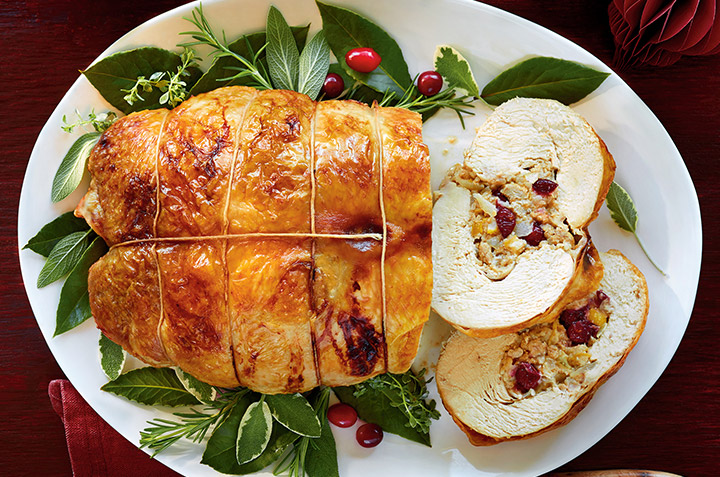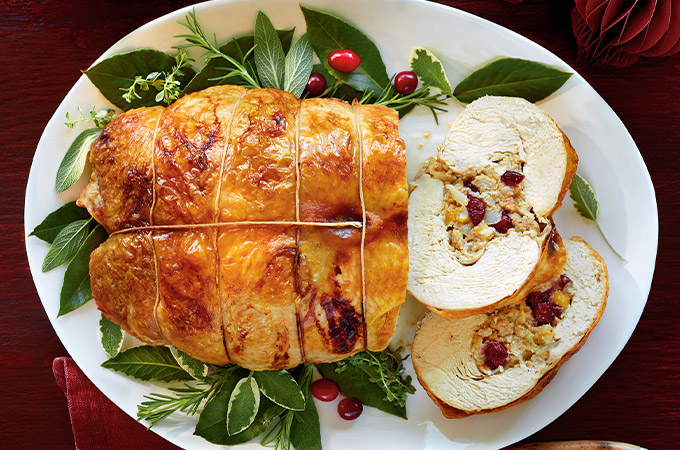1. Brine
Since a turkey roast is much smaller than a whole bird, we can easily submerge it in a liquid brine. The combination of water, salt, brown sugar, black peppercorns and bay leaves lends a concentrated flavour and ensures the meat stays moist. After a 12-hour brine in the refrigerator, the texture of the meat once it’s cooked is simply perfect.
2. Fortified wine
To highlight turkey’s delicate flavour, we like to make a gravy that’s slightly sweet. A fortified wine, such as port, sherry or Marsala, is a good choice, with not too much acidity and a nice dose of concentrated sugar. The sweetness complements both the tartness of the cranberries and the saltiness of the brined meat.
3. Seasonal stuff
We stuck with tried-and-true ingredients for our stuffing, but incorporated seasonal fruity notes, too. Using ground pork as the base, we added pear and fresh or frozen cranberries—they’re more tart and less sweet than dried ones. The soft, fragrant pear is a perfect match for the festive red fruit’s acidity, but an apple is also aces in a pinch.
4. Bread crumbs
The addition of bread crumbs means that our stuffing can absorb the extra liquid released from the cranberries and pear during cooking without becoming soggy and losing that festive flavour. We chose a commercial crumb over fresh bread for ease, speed and the uniform texture you can’t achieve by tearing up a loaf with your hands.
5. Cooking
This roast requires no preliminary searing, nor do you need to turn it over halfway through. But to ensure ideal doneness, we highly recommend using a meat thermometer instead of simply relying on the roasting time. We even did a test by reheating leftover turkey in the microwave the next day. The result? Totally tender and juicy!
6. Juices
The best gravies are always made using those delicious cooking juices that gather at the bottom of the roasting pan. Once the turkey is cooked and resting, deglaze the pan by adding water or stock and, using a wooden spoon, scrape up all those crispy bits (otherwise known as the good stuff) on the bottom. This is how gravy becomes liquid gold!


